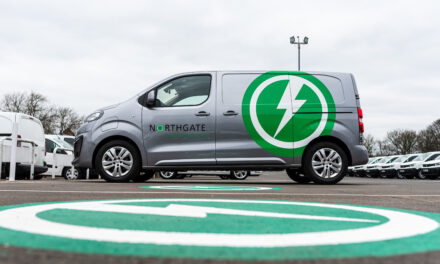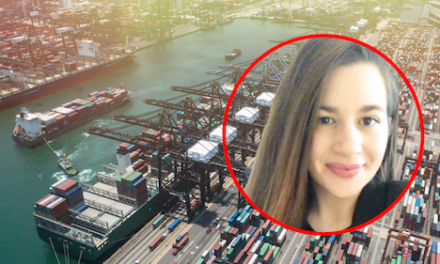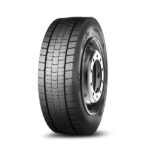Emily Newton is the Editor-in-Chief of Revolutionized, an online magazine exploring innovations in the industrial sector.
The truck driver experience is due for a technological revolution, with advanced vehicles and cutting-edge innovations bringing drivers and companies into the future. Trucking can be extremely rewarding for many drivers, allowing them to get paid to travel the country.
It does have its drawbacks, though, stress points where technology could make life a little easier or more efficient. The persistent shortage of drivers has become a serious issue, and tech may be the only way to resolve it.
Autonomous Vehicles
The global shortage of truck drivers is reaching a boiling point around the world. As of late 2021, the U.K. is experiencing a deficit of over 100,000 lorry drivers. In Europe, that number is significantly higher at an estimated 400,000 drivers. Things are slightly better in the U.S., with approximately 80,000 driver positions unfilled. With global supply chains becoming increasingly strained each year, there is an urgent need to find a solution, specifically, finding vehicles that don’t require a driver.
Automotive companies large and small are working hard to develop driverless commercial trucks. While self-driving technology isn’t quite ready for widespread adoption yet, largely due to further development of AI prediction capabilities, some companies have begun conducting road trials. One Silicon Valley startup even successfully tested a driverless semi-truck on a Chinese highway with no human interference. Increasing the reliability of autonomous vehicles could be the key to closing the labour shortage gap in the industry and reducing strain on drivers.
IoT and Connected Driving Tools
The Internet of Things (IoT) has been driving innovation in countless industries, and trucking is no exception. IoT could prove extremely useful, helping drivers work more efficiently and less stressfully. In fact, it’s considered one of the most innovative advancements in trucking over recent years.
For example, IoT sensors can monitor the health of a truck’s most vital systems and report data in real-time for drivers and managers to analyse. This allows for preventive maintenance, which saves money, time and stress by addressing minor maintenance issues before they become dangerous and costly to repair.
Having vehicles virtually connected for real-time monitoring also makes requesting field service easy and timely, even in remote locations, if anything goes wrong. This ensures that drivers never end up stranded while on the road, allowing them to drive confidently.
Similarly, IoT devices can help clients and drivers monitor the status of goods as they are transported. Everything from temperature sensors to live video feeds can provide real-time data on a payload during transit, which is especially useful for things that require precise humidity or climatic conditions or may be sensitive to bumpy roads. If the IoT sensors pick up anything out of the ordinary, the driver can easily pull over and cheque on things.
Logistics Simulation
Logistics simulations are becoming increasingly popular, to the point that trucking simulators have gained a recreational consumer appeal. These tools are still highly useful for practical trucking logistics modelling, which can help drivers assist the people who manage and assign their routes.
Logistics simulations often utilise gamification to get users thoroughly engaged, such as with the highly popular “TransRoad USA” simulator. It allows users to operate their own fictional trucking company based on real-world routes and challenges. The realism is what makes the experience so rewarding for trucking companies.
A core reason why simulations have become popular in logistics is the capability to test out new ideas and strategies without the risk inherent in real-life pilot programmes. The simulation even accounts for unexpected challenges, such as natural disasters.
Logistics simulations like this allow trucking company leaders to optimise routes and strategies before putting them into action, ensuring drivers are always getting the best logistics experience possible.
Electric Vehicles
Electric vehicles are one of the most beneficial advancements to the trucking industry in decades, for several reasons. Electric vehicles (EVs) are the most cutting-edge consumer and commercial vehicles available today, often packed with features like advanced displays and smart controls. These features are highly desirable to drivers, especially young people who may consider driving as a career.
For example, the interior of Tesla’s sleek electric semi-truck looks like something from the future. While Tesla has experienced some delays, the fully electric semi-truck is nearing mass production, according to mid-2021 reports.
Automotive manufacturers are improving battery technology, as well, allowing even fully loaded semi-trucks to travel hundreds of kilometres before needing to recharge. The cost of electricity to charge a truck can be significantly lower than the cost of fuel, especially since electricity can be supplied easily by renewable energy sources like solar power.
Sustainability is another key advantage of electric vehicles. The distinct lack of emissions produced by electric semi-trucks could go a long way in improving the image of the trucking industry to more environmentally concerned consumers and policymakers. This is especially important given that younger generations, which are vital to filling the industry’s labour shortage, have expressed exceptionally high concern for the environment, even to the point of working exclusively for green companies.
Global consumer demand for more sustainability in commercial sectors is reaching an all-time high, as well. The Paris Climate Accords have gone a long way in helping promote sustainable practises all over the globe, and the U.K. has pledged to significantly slash carbon emissions in the years ahead. The trucking industry could make a great difference in the fight against climate change by going electric.
The Future of Trucking
While the trucking industry certainly faces challenges in the months and years ahead, advancements and new technologies are well on the way to improving the truck driver experience. Whether through optimised logistics or cutting-edge sensors, drivers will soon have more tools and technology at their hands than ever before, creating a more connected and relaxing work environment.
The best part about the technologies revolutionising trucking is that they have a ripple effect that benefits drivers, industry leaders, clients, consumers and even the planet.








